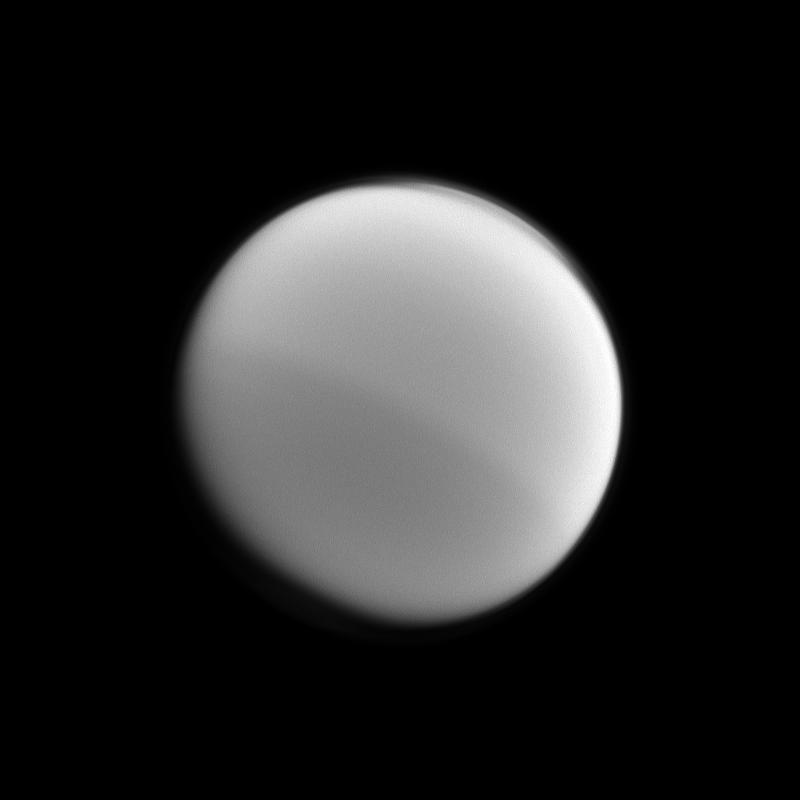Splitting Titan

| PIA Number | PIA14610 |
|---|---|
| Language |
|
Light and dark halves of Titan are visible in this Cassini image which illustrates the seasonal changes in the northern and southern hemispheres. This picture was taken with a spectral filter that is sensitive to absorption of certain wavelengths of light by the methane present in the moon's atmosphere.
See Two Halves of Titan to learn more about this seasonal hemispheric dichotomy. This view looks toward the anti-Saturn side of Titan (3,200 miles, or 5,150 kilometers across). North on Titan is up and rotated 29 degrees to the right. The moon's north polar hood is also visible in the top right of the view (see Haze Layers on Titan and Titan's North Polar Hood).
The image was taken with the Cassini spacecraft wide-angle camera on Jan. 31, 2012 using a spectral filter sensitive to wavelengths of near-infrared light centered at 890 nanometers. The view was obtained at a distance of approximately 130,000 miles (210,000 kilometers) from Titan and at a Sun-Titan-spacecraft, or phase, angle of 24 degrees. Image scale is 8 miles (12 kilometers) per pixel.
The Cassini-Huygens mission is a cooperative project of NASA, the European Space Agency and the Italian Space Agency. The Jet Propulsion Laboratory, a division of the California Institute of Technology in Pasadena, manages the mission for NASA's Science Mission Directorate in Washington. The Cassini orbiter and its two onboard cameras were designed, developed and assembled at JPL. The imaging team is based at the Space Science Institute, Boulder, Colo.
For more information about the Cassini-Huygens mission visit http://saturn.jpl.nasa.gov or http://www.nasa.gov/cassini . The Cassini imaging team homepage is at http://ciclops.org .
Credit: NASA/JPL-Caltech/Space Science Institute
